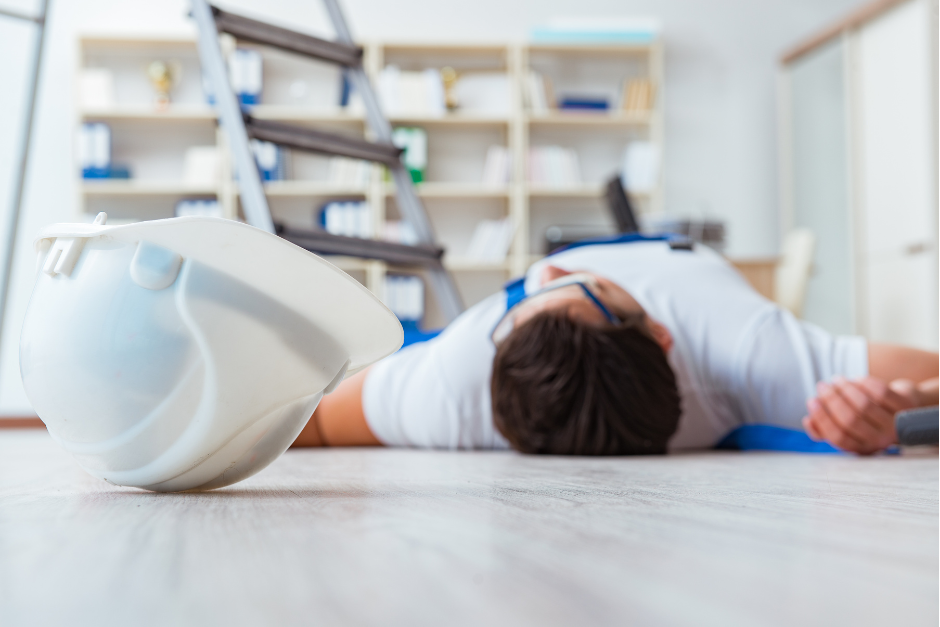We’re heading into Slip, Trip and Fall season! With frost and snow just around the corner, this is a good time to offer some workplace training to avoid potential accidents. Slips, Trips and Falls (STFs) are the second leading cause of workplace injuries and are responsible for nearly 700 workplace fatalities each year. That’s 15% of workplace deaths. Those statistics should grab your attention. Even if most accidents result in minor injuries, ANY injury is one we’d like to prevent.
A slip is when your foot loses traction with the walking surface. This results in a sudden loss of balance. Slips can happen on icy walking surfaces, a newly waxed floor, wet leaves, etc.
A trip happens when your leg or foot comes into contact with a hazard, either an object or an uneven surface. Tripping hazards could include drawers that are left open, uncovered hoses or electrical cords across walking areas, unmarked steps or ramps as well as clutter in the hallway or on the stairs.
Falls are broken into two categories, (1) same level and (2) elevated. A same level fall happens when a person falls from a standing position to the floor. An elevated fall happens from a ladder, scaffolding or an opening in the floor.
Other factors that contribute to STFs are fatigue, improper PPE, poor air quality, and bad lighting. Inspecting your work areas and finding improvement strategies will help your team avoid injury. Taking these types of precautions does not have to be expensive and will protect both your workforce and your bottom line in the long term. Here are a few recommendations from our safety team:
- Encourage proper footwear.
- Keep areas clear of water, snow and other debris.
- Mark hazard areas such as newly mopped floors.
- Make sure all light fixtures are in proper working order.
- Encourage good housekeeping measures; have employees regularly clear out clutter.
- TRAIN your staff to recognize and mitigate hazards.
OSHA Guidelines
Because of the prevalence of slips, trips and falls in the workplace, the Occupational Safety and Health Administration (OSHA) has developed extensive prevention guidelines and safety rules. OSHA recommends that every employer take these three basic steps:
- Plan ahead – Know ahead of time when work needs to be done at heights and determine the safety equipment you will need.
- Provide the correct equipment – Have the appropriate fall protection gear for the equipment you are going to use such as scaffolds and ladders. Also, check the equipment to ensure that it is in working order.
- Train everyone to use the equipment – The best safety equipment can’t do its job if workers don’t know how to use it. Be sure to provide enough training in advance so that your employees know how to use ladders, scaffolds or harnesses.



It all comes down to, everyone in the workplace being aware of their surroundings and walking and working at a pace that is appropriate for the surfaces they are on. Let us know if you need more information on how to keep your team safe from SLIPS, TRIPS and FALLS.

